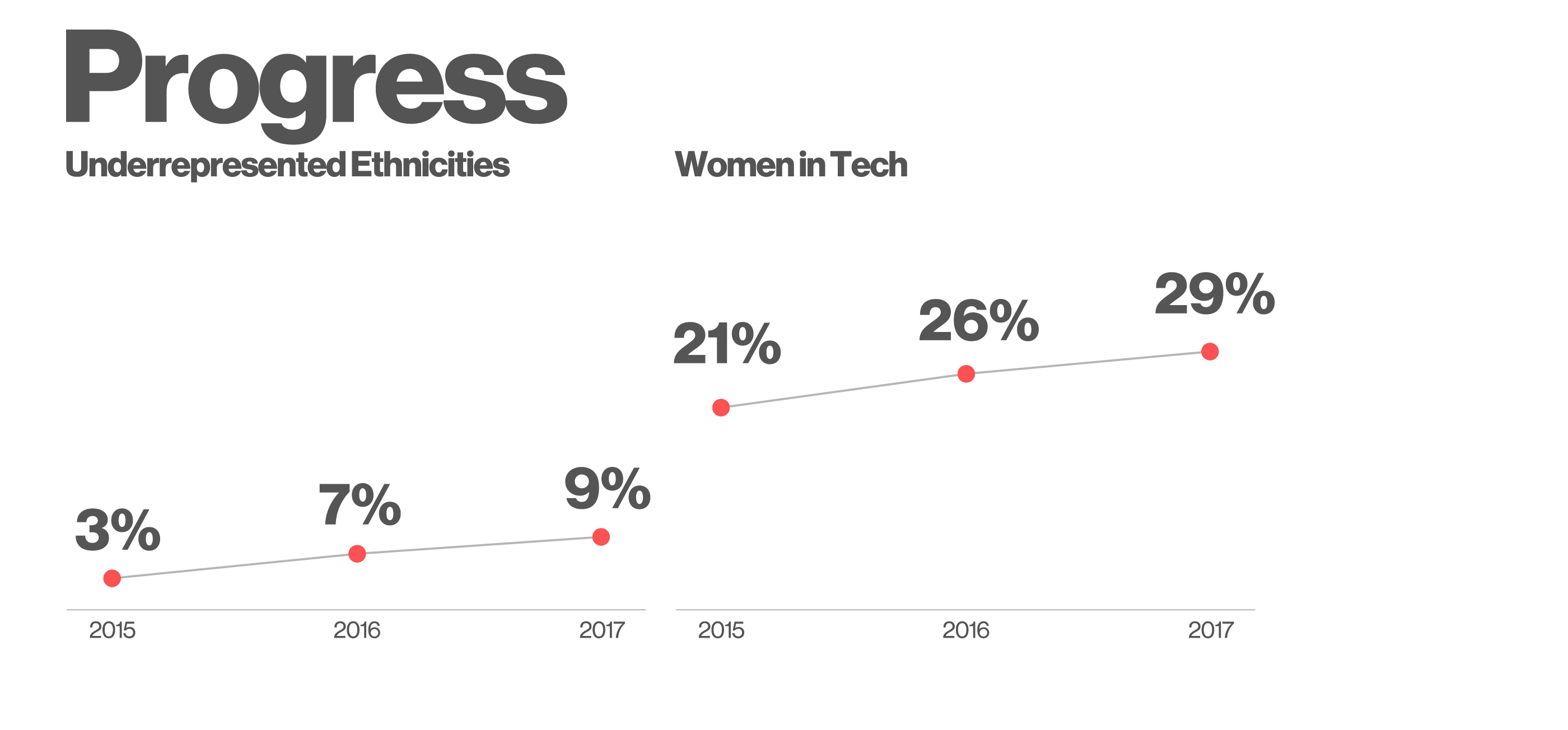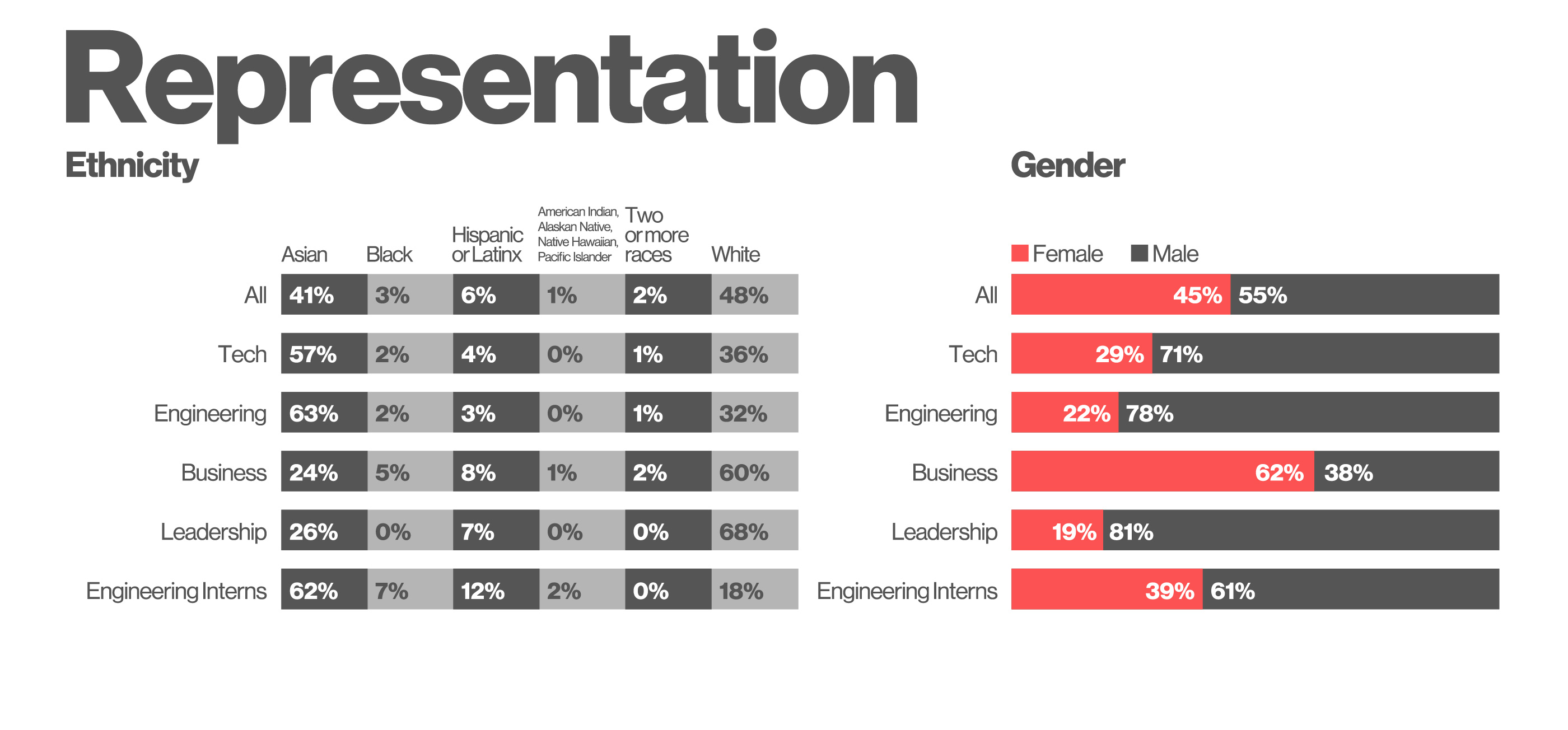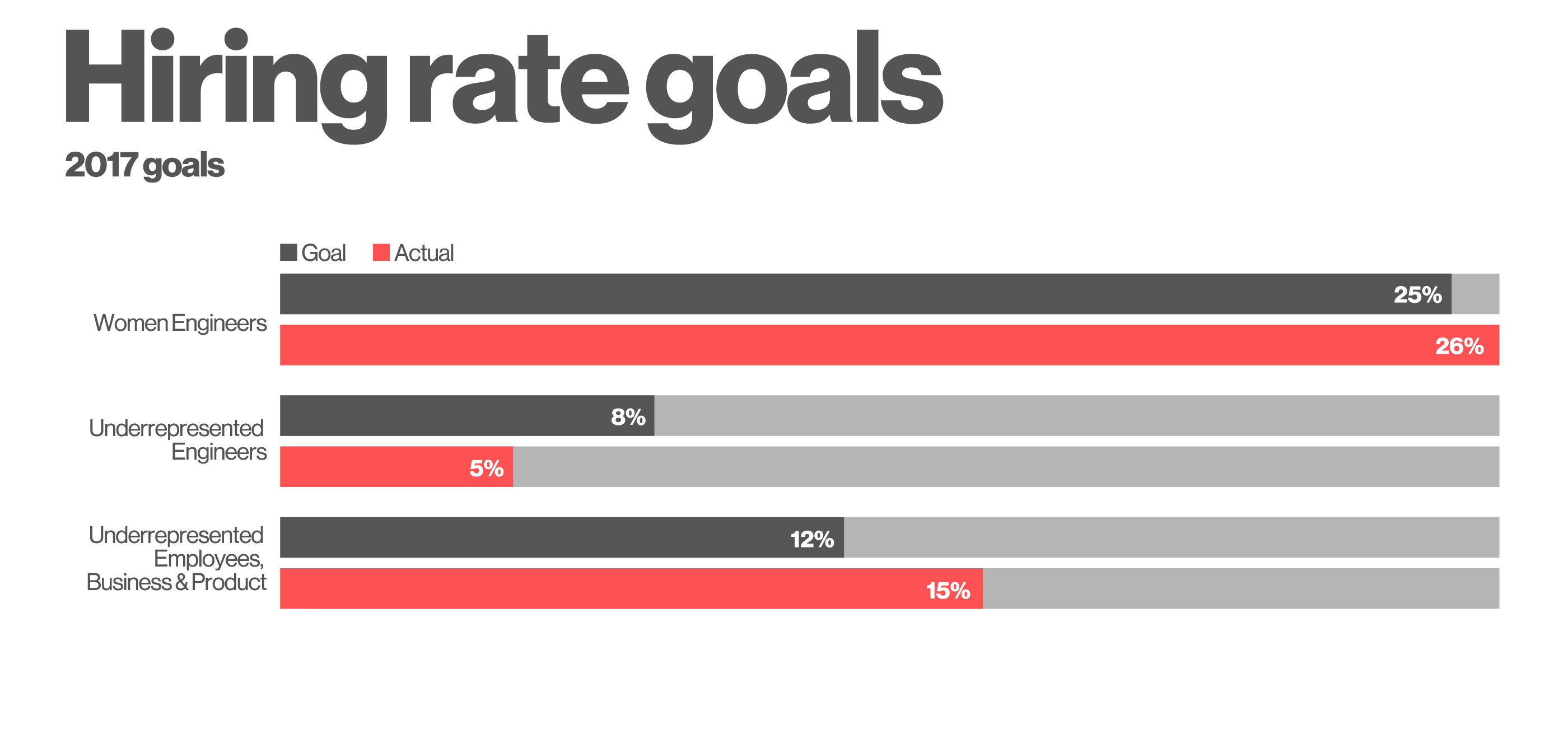Our mission at Pinterest is to help people discover and do what they love. Hundreds of millions of people come to us to get ideas and inspiration for their lives. And our goal every day is to deliver for our Pinners.
To do that, we want to bring in the best talent we can and create a work environment where people can do their best work. That is why one of our top priorities is building a diverse workforce and an inclusive workplace.
Diversity and inclusion mean a lot to us personally. They are also good for our business. Bringing in people with different backgrounds, ideas and perspectives helps us fulfill our mission and strengthens our company. A few years after we started Pinterest, we were growing quickly and we realized that we had to make a concrete effort to build a diverse and inclusive culture. So we got to work.
That started with how we hire. In 2015, we became one of the first tech companies to set annual public hiring goals, after being one of the first to publicly share numbers in the prior years. Though we still have work to do, we have made a lot of progress.
Over the past two years, the number of people from underrepresented ethnic groups working at Pinterest grew from 3% to 9% of the company. Women in tech roles (engineers, product management and design) increased from 21% to 29%.
In 2017, specifically, we hit two of our three hiring goals. Here are the details:
- We wanted to increase hiring rates for full-time women engineers to 25%. We exceeded it and reached 26%.
- We wanted to increase hiring rates for engineers from underrepresented backgrounds to 8%. We fell short at 5%.
- We wanted to increase hiring rates for people from underrepresented backgrounds in non-engineering roles to 12%. We exceeded this goal by reaching 15%.



How did we do this? Of course there's room for improvement, but we're encouraged by the results. One highlight this year was our apprenticeship program which opens doors for self-taught coders. There are a lot of talented people who don’t come from computer science backgrounds but still have a lot to offer. So we started this initiative to help talented candidates get their foot in the door, and have hired a number of apprentices to become full-time engineers.
Another highlight was how we have expanded the talent pool when looking for candidates. We now interview at least one person from an underrepresented background and one female for every open leadership position. This is modeled after an NFL initiative called the “Rooney Rule.” This year we expanded this effort to include senior management roles so that we are getting the best candidates for positions at all levels of the company.
These are just some examples of the work we’re doing. We have come a long way. But we still have work to do. In 2018, we will try to achieve the same aggressive goals that we had this year and bring in more people who will strengthen our business and product.
We also know that it’s not enough to focus on hiring. We are also focusing on inclusion.
Pinterest has made inclusion a priority. People do their best work when they know they are valued and respected at the office. And every day, we strive to make our work environment a place where people can innovate instead of worrying about other things.
So how did we make Pinterest more inclusive? Well, we did a few things.
- We looked at what our really great managers were doing to build inclusive teams and created a playbook based on those principles so that leaders at all levels could put those practices into action.
- We added a checkpoint during performance reviews so managers could pause and identify any common biases they may have been making.
- We made unconscious bias training a priority for employees and managers so they can be aware of any hidden preferences they may hold.
This work is making a difference. We are proud that industry studies say that Pinterest is one of the best companies for diversity and for women to work. And we are going to continue doing everything we can to create a culture where everyone feels like they belong and can focus on doing their jobs.
We are also working with Partners to scale these efforts. Diversity isn’t just good for Pinterest—it’s good for the whole industry. We all benefit when more people get the chance to contribute and innovate. So in addition to our internal efforts, we have also looked for ways to support other organizations doing really important work.
One of them is called /dev/color. Started by a former Pinterest engineer, this non-profit helps Black engineers build their careers and grow as industry leaders. We all know that historically it’s been way too hard for Black developers to get opportunities in the tech industry. /dev/color’s goal is to address those barriers so that talented individuals can get jobs and start businesses.
Another example is Paradigm, which develops strategies to help companies do better when it comes to diversity and inclusion. They use a lot of amazing data and research to help organizations examine and improve the way they hire and operate. Their work has helped strengthen a lot of companies of all sizes.
Both of these organizations actually have space at our headquarters. And we are really glad to be a part of their work to open doors for others.
We know this will be a long journey and that we have a lot of work to do. But we are confident that it will make our business and our industry better. And we look forward to sharing our progress in our update next year.